Making a rainforest diorama is a fun and educational activity that kids of all ages can enjoy. I have found that creating a diorama is an excellent way to teach children about the diverse range of plants and animals that can be found in a rainforest ecosystem. Not only does it help to develop their creativity and imagination, but it also encourages them to learn about the importance of preserving our natural environment.
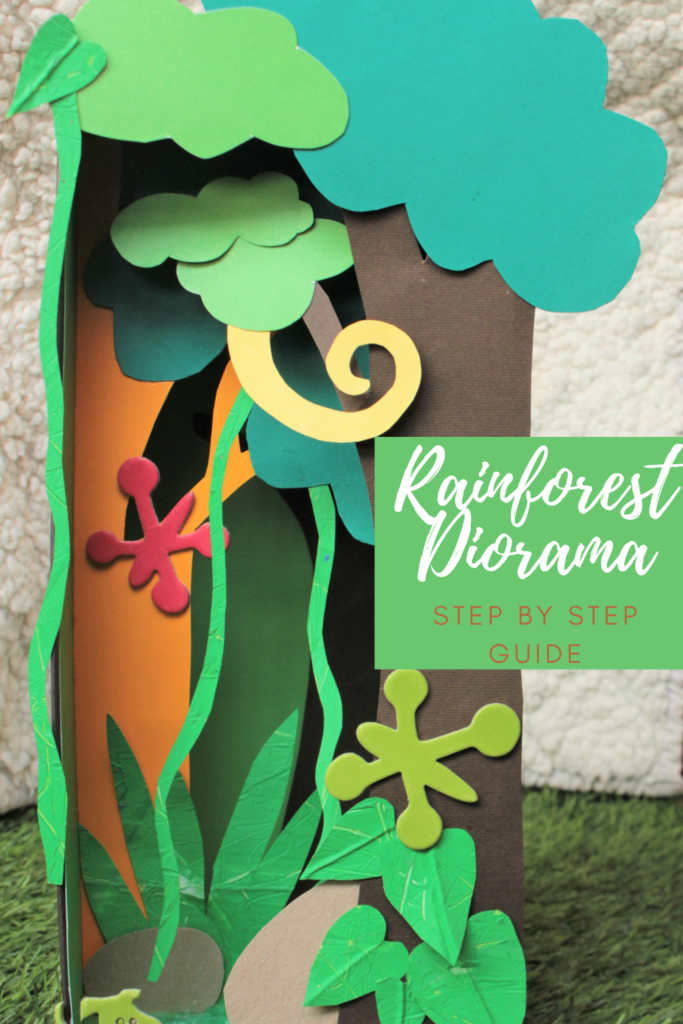
To make a rainforest shoebox diorama, you will need a few basic materials such as a shoebox, construction paper, scissors, glue (or glue gun), and paint. You can also use natural materials such as leaves, twigs, and moss to create a more realistic effect. The first step is to decide on the theme of your diorama, whether it be a specific rainforest animal or a general representation of the ecosystem. Then, you can start to create your background, adding layers of green construction paper to represent the different levels of the rainforest.
Once you have your background, you can start to add in the different elements of your diorama, such as trees, animals, and water features. Encourage your child to use their imagination and creativity to make their rainforest diorama as realistic and detailed as possible. By the end of this article, you will have all the information you need to create a fun and educational rainforest diorama with your child.
Just in case you’re interested, I’ve got a handful of related posts below:
How to Make a Diorama in a few easy steps
Easy and Affordable Diorama Kits from Amazon
15 Fun Diorama Ideas for Kids of Any Age
Christmas Diorama Ornament from a Dollar Tree Terrarium

Disclosure; this post contains affiliate links. As an Amazon Associate I earn from qualifying purchases. This disclosure statement refers to the rest of the Amazon links in this post. See more on my disclosure page.
Materials
Required Materials
To make a rain forest diorama, you will need most (not all, some are optional) of the following materials:
- Shoebox or any other box with a lid
- Construction paper – mainly different shades of green paper and brown paper
- Tissue paper
- Scissors
- Glue stick
- Glue gun
- Paint
- Paintbrushes
- Markers
- Pencil
- Ruler
- Toy animals or plastic figurines
- Small rocks or pebbles
- Twigs or small branches
- Leaves
- Moss
- Green or Blue plastic wrap
Optional Materials
These are the optional materials that you can use to enhance the diorama:
- Miniature waterfalls or fountains
- Small LED lights
- Mirrors
- Small plastic insects
- Small plastic birds
- Small plastic reptiles
- Small plastic mammals
- Small plastic fish
In the next section, I will explain how to use these materials to create a stunning tropical rainforest diorama for kids.
Steps
Step 1: Research
I start by researching the rainforest biome and its characteristics. I gathered information about the types of trees, plants, animals, and weather patterns in the rainforest. This helped me design a realistic and accurate diorama.
Step 2: Sketch Design
After researching, I sketched a rough design of the diorama on paper. I decide on the size, shape, and layout of the base. I also sketched the placement of tree trunks, plants, animals, and water features. This helps me visualize the final product.

Step 3: Gather Materials
Once I have a design, I gathered all the necessary materials. This includes a base material like cardboard or foam board, paint, glue, scissors, and craft materials like paper, and/or pipe cleaners. I also gathered materials for trees, plants, animals, and water features like rocks, pebbles, and blue cellophane for water.


Step 4: Create Base
I started by creating the base of the diorama. I cut the base material to the desired size and shape. I then painted the base to resemble the forest floor. I added texture and dimension using craft materials like paper and clay. This creates a realistic and engaging base for the diorama.

Step 5: Add Trees and Plants
Next, I added trees and plants to the diorama. You can use craft materials like paper, clay, and pipe cleaners to create trees and plants of different shapes and sizes. You can also add greenery to the forest floor using moss, grass, and other craft materials.


Step 6: Add Animals
Once the trees and plants are in place, I added animals to the rainforest diorama project. Use plastic, clay or handmade animals to create a realistic and engaging ecosystem. I placed animals in different parts of the diorama to create a sense of movement and activity.

Step 7: Add Waterfall or River
If you want to add a waterfall or river to the diorama, you can use blue cellophane or blue tissue paper to create a water feature. Place rocks and pebbles around the water feature to create a natural look. Don’t forget to add plants and animals around the water feature to create a sense of life and activity.
You can see on the bottom of our diorama the greenish water feature.

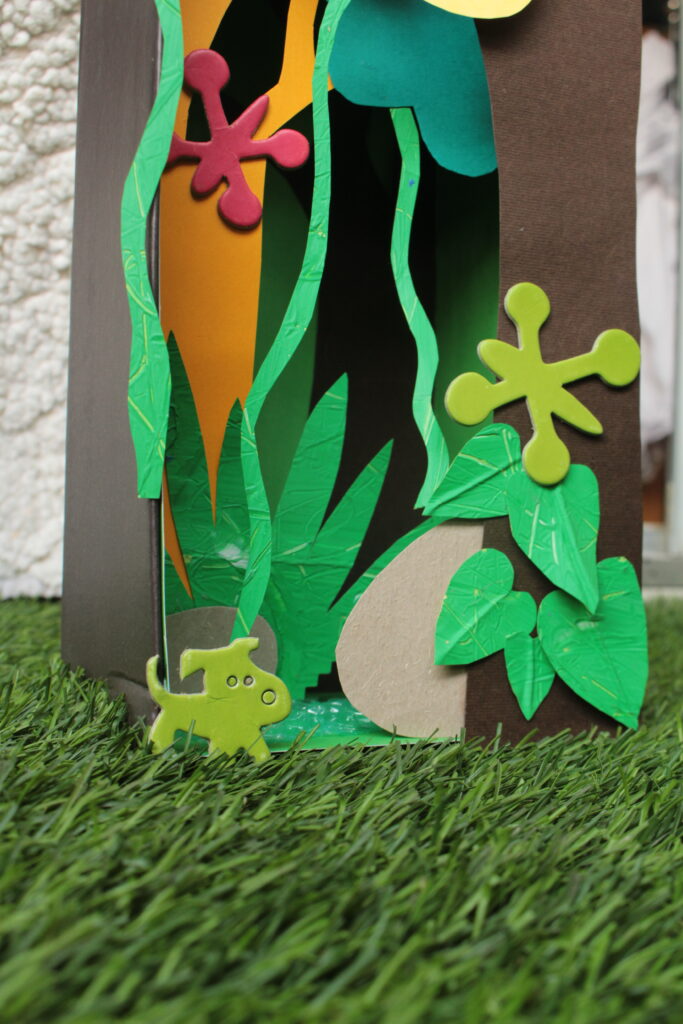
Step 8: Add Final Touches
Finally, I added final touches to the diorama. This includes adding details like mushrooms, vines, and other small craft materials. I also made sure everything was securely glued in place and that the diorama was stable and balanced.

That’s it! By following these steps, I created a beautiful and engaging rainforest diorama for kids.
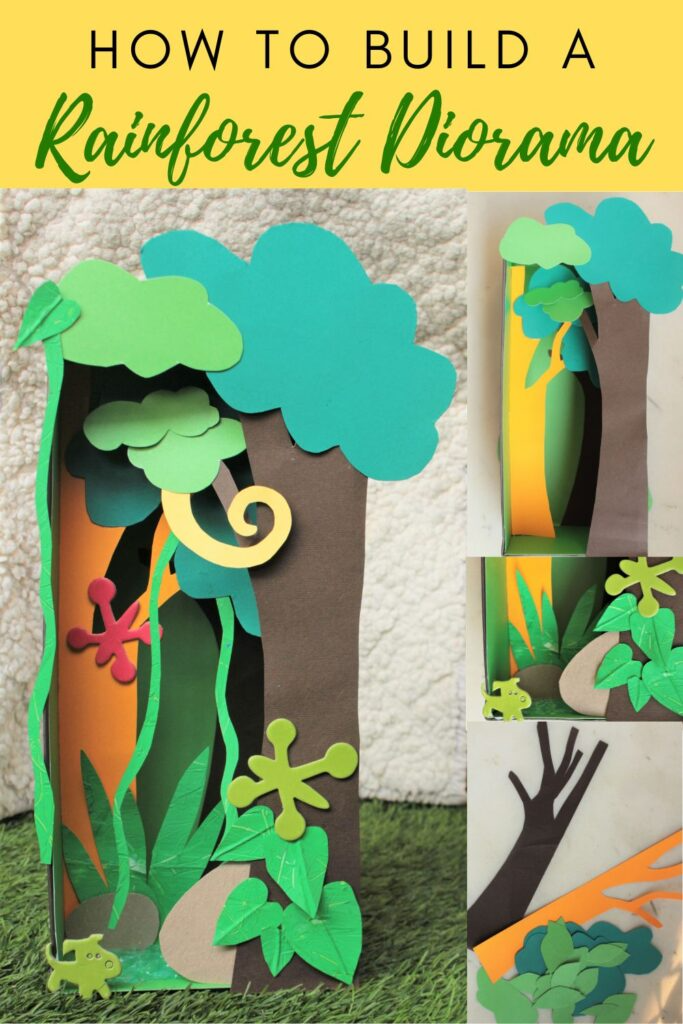

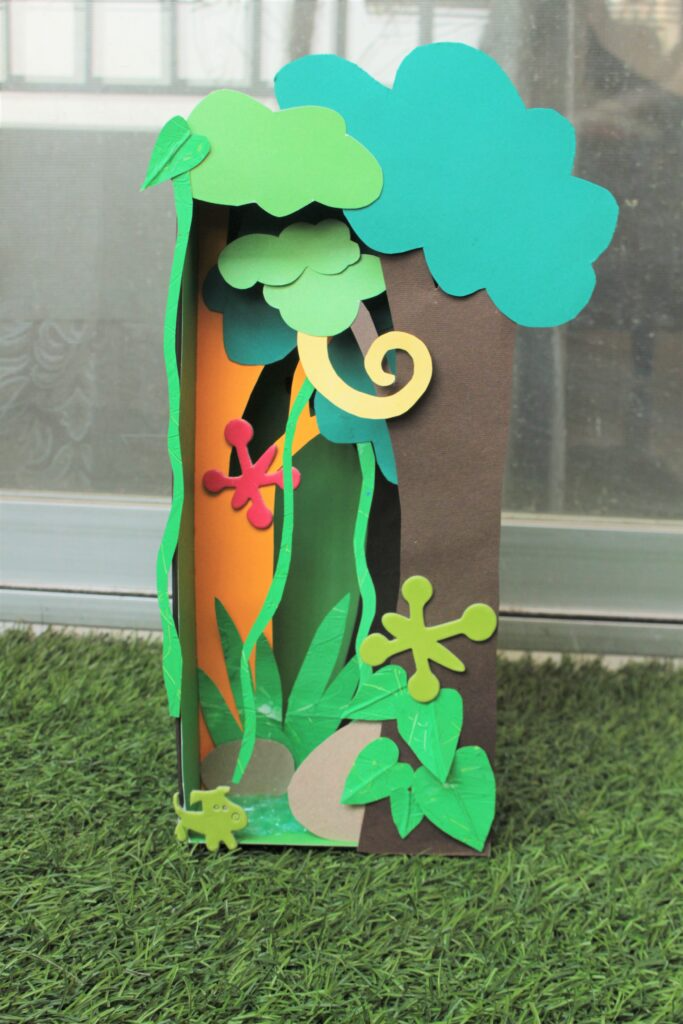
Tips and Tricks
Tip 1: Use Realistic Materials
I always try to use realistic materials when creating a rainforest diorama. This helps to make the diorama look more authentic and engaging for kids. Some materials that work well include:
- Realistic-looking artificial plants and trees
- Moss, rocks, and pebbles
- Sand, dirt, and gravel
- Small plastic or rubber animals
Using these materials can help to create a more immersive experience for kids as they explore the diorama.
Tip 2: Add Depth and Texture
Another important aspect of creating a rainforest diorama is adding depth and texture. This can be achieved by:
- Creating layers of foliage to mimic the different levels of the rainforest
- Adding texture to the ground with sand, dirt, or gravel
- Using different shades of green to create depth and contrast

By adding depth and texture, you can make the diorama more visually interesting and engaging for kids.

Tip 3: Use a Variety of Colors
Finally, I always try to use a variety of colors when creating a rainforest diorama. This helps to make the diorama more visually appealing and interesting for kids. Some colors that work well include:
- Different shades of green for the foliage
- Brightly colored flowers and fruits
- Brown and gray for rocks and pebbles
Conclusion
Making a rainforest diorama is a fun and educational activity for kids. Throughout the process, children can learn about the different layers of the rainforest, rainforest animals and plants that inhabit it, and the importance of rainforests in our ecosystem.
By using simple materials such as cardboard, paint, and paper, kids can unleash their creativity and imagination while building their diorama. Additionally, incorporating realistic elements such as trees, vines, and animals can help bring the rainforest to life.
Overall, creating a rainforest diorama is a great way to teach children about the beauty and complexity of nature while having fun and being creative. With a little bit of guidance and inspiration, kids can create a stunning and educational diorama that they can be proud of.
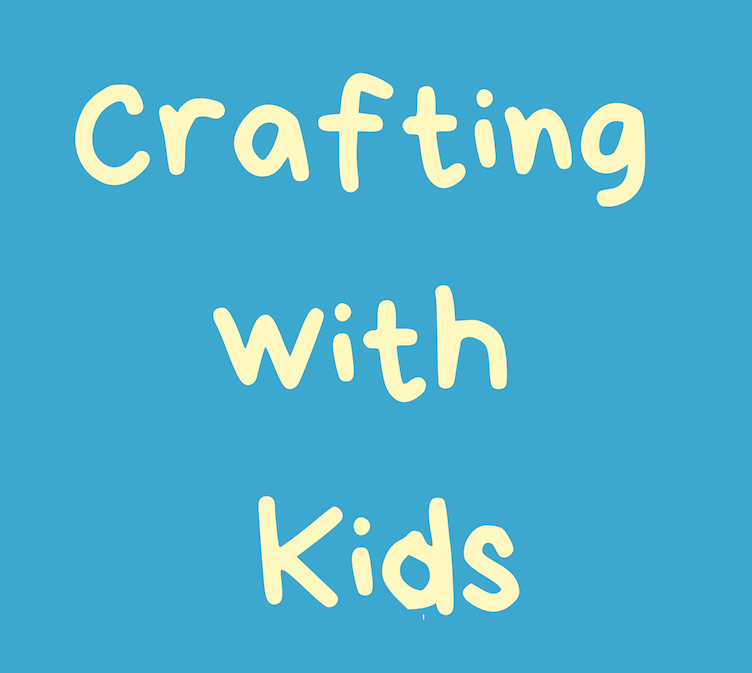
Leave a comment